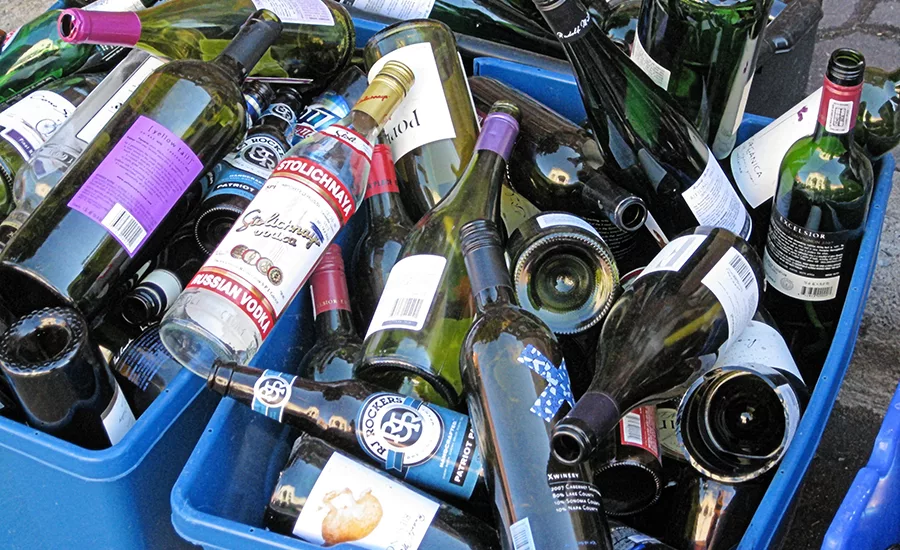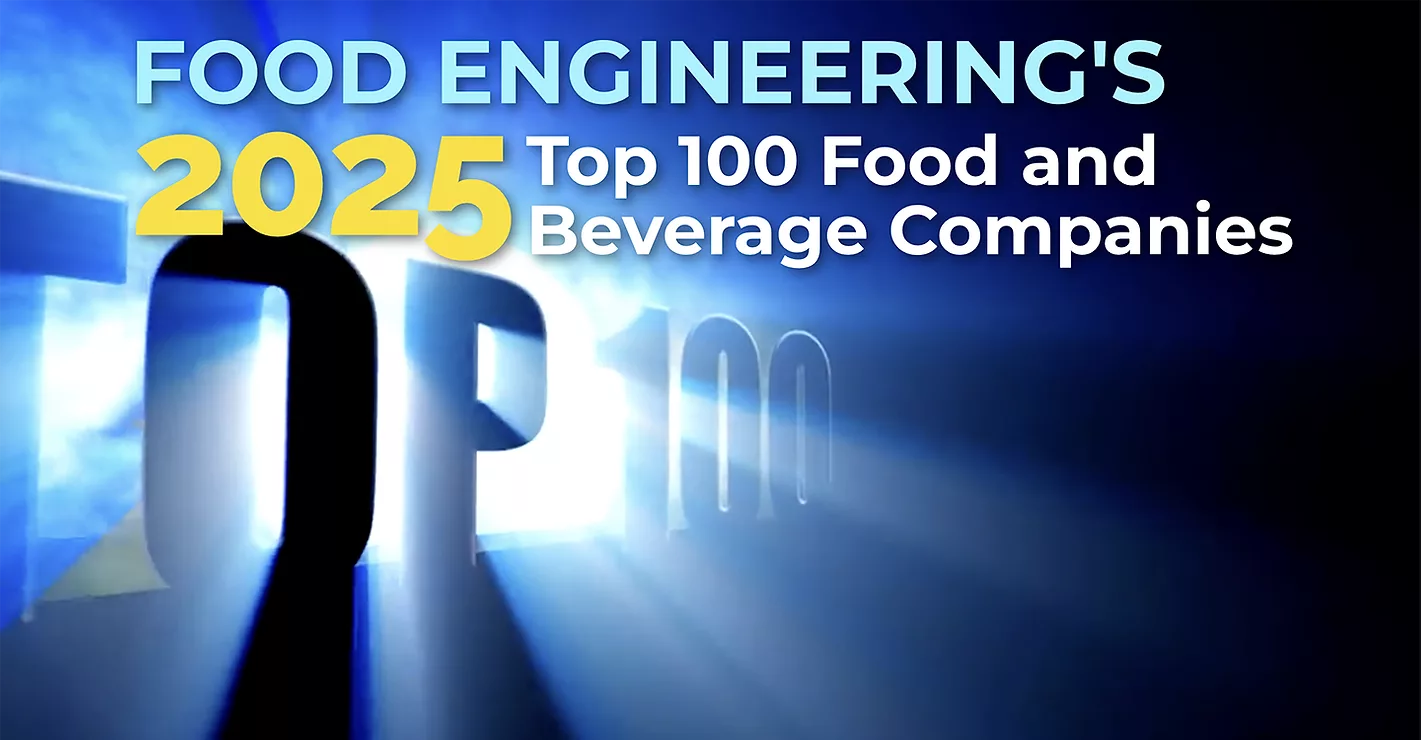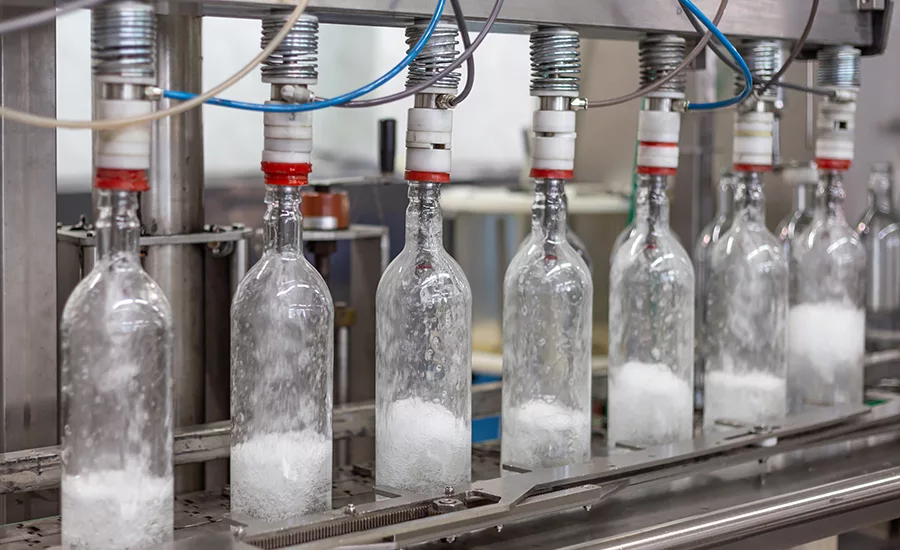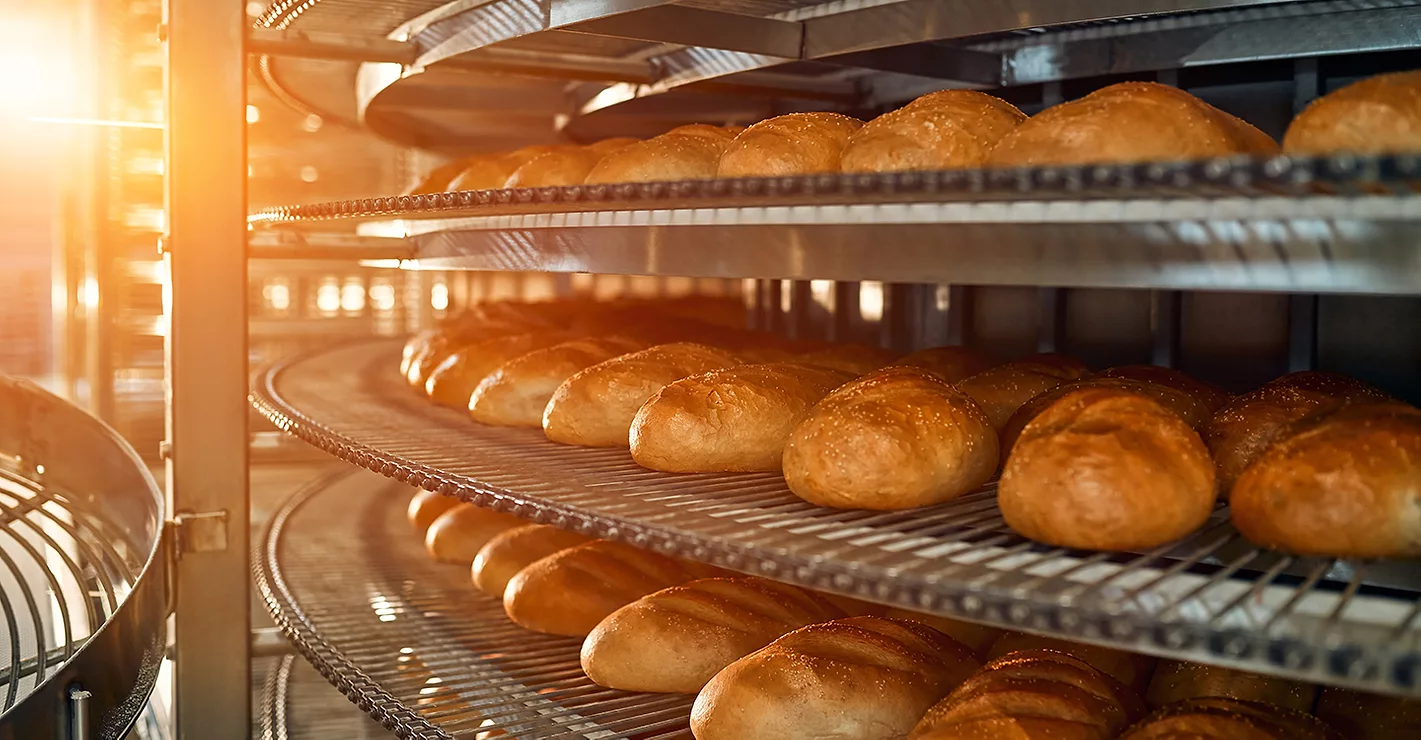Growing demand, short supply drive recycling

Increased demand for alcohol is one factor driving a glass bottle deficit in the U.S. Photo courtesy of Getty Images/tlmedia
The U.S. glass bottle market is running into a supply shortage caused by high demand for alcohol, raw materials being reallocated to produce vaccine vials and supply-chain disruptions arising from the shipping-container crisis. Confronted with a labor shortage, the increased demand for glass could incentivize developments in recycling with substantial potential for growth because currently, only 31% of glass bottles in the U.S. are recycled, according to a report by IndexBox.
The research firm said that in 2020, the U.S. market of glass bottles and containers grew by 0.6%, reaching about 4.4M tonnes or $6.7B. Approximately 25% of the American market is supplied by foreign products, mainly from Mexico (29% of total U.S. imports), China (18%) and Taiwan (10%). Despite imports rising to $1.6B in the first 10 months of 2022 (+22% compared to the same period in 2020), the U.S. is facing a glass bottle deficit. Beverage producers must search for alternatives. The key factors causing this shortfall are the high demand for alcohol and the increasing number of recycled bottles used for producing glass vials for vaccines. Another factor inciting the scarcity of glass bottles is the supply chain disruption in Asia, rising from a deficit in shipping containers.
There is excellent potential to increase glass recycling and expand the raw material base in the U.S. Since glass is 100% recyclable, implementing a recycling process could replace up to 95% of first-use materials with second-use. Even though in the past 40 years, the amount of recycled material grew by a factor of four, the EPA calculates that recycled glass only accounts for a 31% share. In these conditions, second-use products are used in 40% of beer and non-alcoholic beverage bottles, 40% of wine and alcoholic beverage bottles and 15% for food and other glass bottles.
Over 40 factories are currently focused on production, and more than 60 operate for processing (recycling) glass in the U.S. During the existing labor shortage, the high demand could drive developments in far more cost-effective technologies, such as a Curbside Recycling Systems. According to the Container Recycling Institute, Curbside Recycling of 1000 tonnes of glass would require about eight personnel while at the same time using a Deposit Return System can be up to 38 times more labor-intensive.
Looking for a reprint of this article?
From high-res PDFs to custom plaques, order your copy today!





